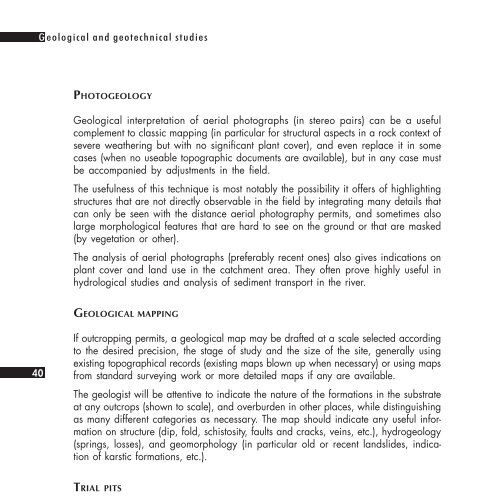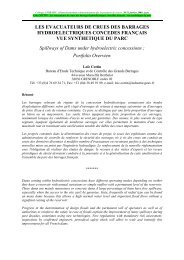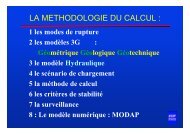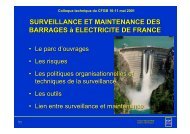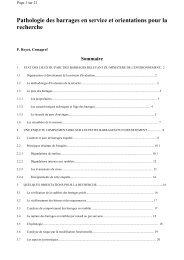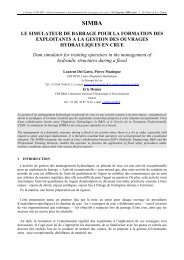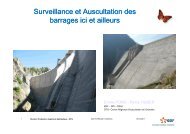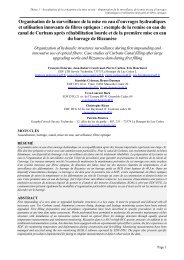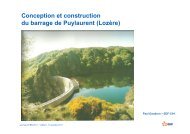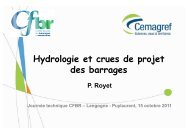SMALL DAMS
SMALL DAMS - Comité Français des Barrages et Réservoirs
SMALL DAMS - Comité Français des Barrages et Réservoirs
- No tags were found...
You also want an ePaper? Increase the reach of your titles
YUMPU automatically turns print PDFs into web optimized ePapers that Google loves.
G eological and geotechnical studies<br />
PHOTOGEOLOGY<br />
Geological interpretation of aerial photographs (in stereo pairs) can be a useful<br />
complement to classic mapping (in particular for structural aspects in a rock context of<br />
severe weathering but with no significant plant cover), and even replace it in some<br />
cases (when no useable topographic documents are available), but in any case must<br />
be accompanied by adjustments in the field.<br />
The usefulness of this technique is most notably the possibility it offers of highlighting<br />
structures that are not directly observable in the field by integrating many details that<br />
can only be seen with the distance aerial photography permits, and sometimes also<br />
large morphological features that are hard to see on the ground or that are masked<br />
(by vegetation or other).<br />
The analysis of aerial photographs (preferably recent ones) also gives indications on<br />
plant cover and land use in the catchment area. They often prove highly useful in<br />
hydrological studies and analysis of sediment transport in the river.<br />
GEOLOGICAL MAPPING<br />
40<br />
If outcropping permits, a geological map may be drafted at a scale selected according<br />
to the desired precision, the stage of study and the size of the site, generally using<br />
existing topographical records (existing maps blown up when necessary) or using maps<br />
from standard surveying work or more detailed maps if any are available.<br />
The geologist will be attentive to indicate the nature of the formations in the substrate<br />
at any outcrops (shown to scale), and overburden in other places, while distinguishing<br />
as many different categories as necessary. The map should indicate any useful information<br />
on structure (dip, fold, schistosity, faults and cracks, veins, etc.), hydrogeology<br />
(springs, losses), and geomorphology (in particular old or recent landslides, indication<br />
of karstic formations, etc.).<br />
TRIAL PITS<br />
Trial pits can be dug out with a mechanical shovel for site investigations at the dam<br />
site, in borrow areas for an earthfill dam, and possibly for evaluation of reservoir<br />
watertightness.<br />
This is essentially done for earthfill dams but may also be used in site investigations<br />
for concrete dams when the rock substratum is not very deep in order to assess the<br />
extent of the stripping that will be required. However, in the case of a concrete dam,<br />
the tests will serve no great purpose as the loose overburden will be removed.<br />
Pits dug with a mechanical shovel (preferably caterpillar type to give access<br />
everywhere) are probably the most widely used technique in studies of the geological<br />
feasibility of a dam site because of their low cost and the mass of information they<br />
provide within a limited time (15 to 20 pits 4 metres deep can be dug per day in most<br />
ground formations).


